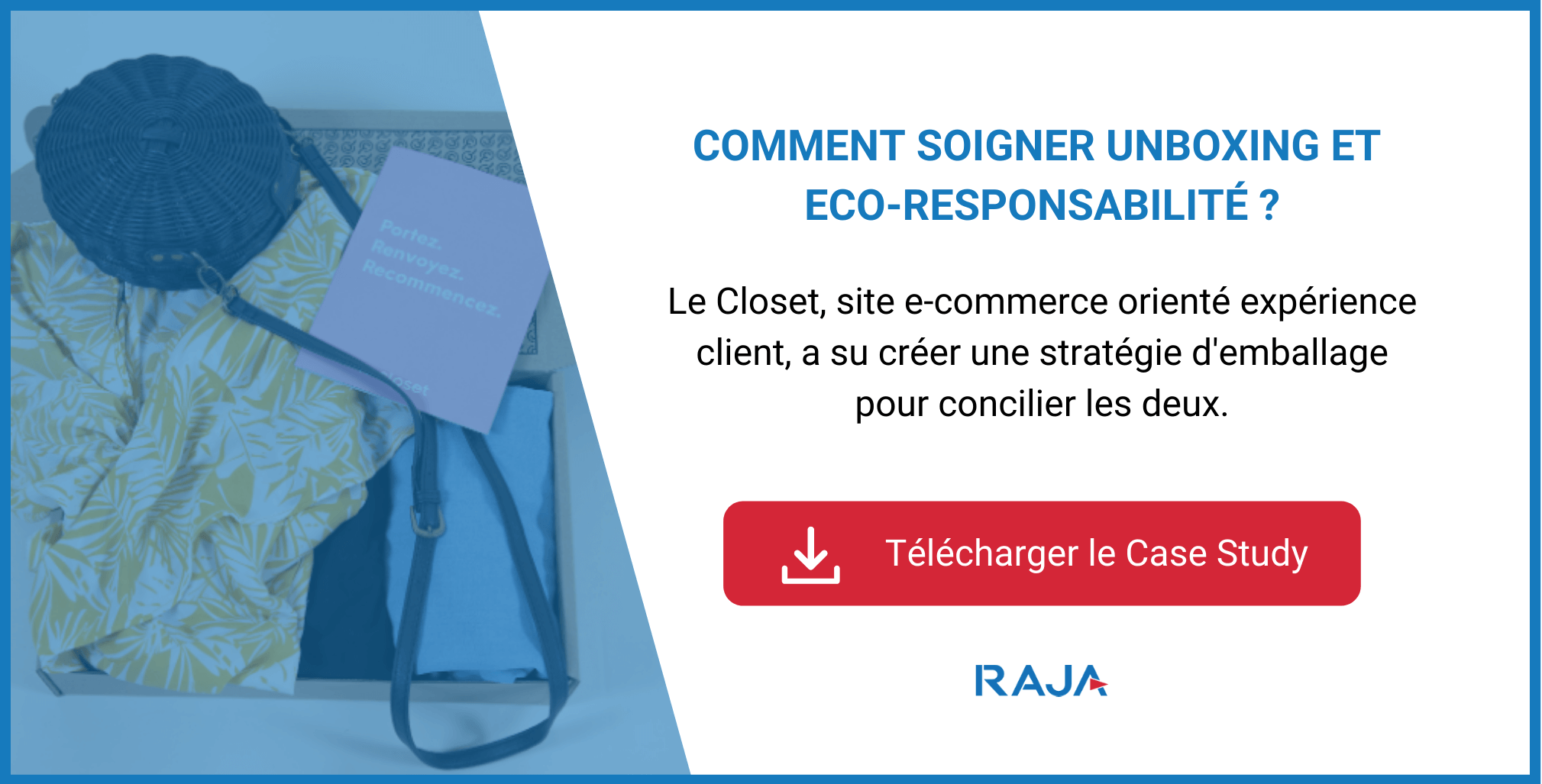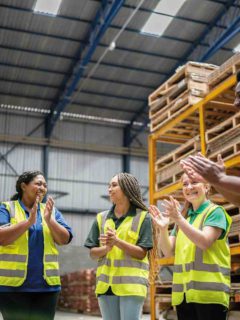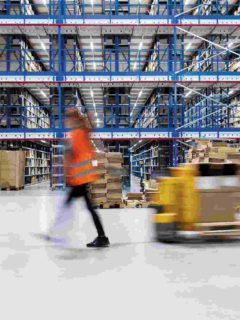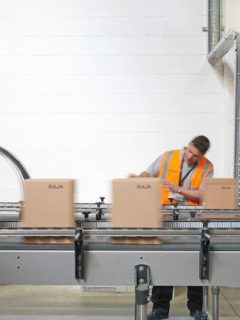To promote your brand and make it all the more attractive, you’re already putting a lot of effort into your communications and marketing. You are redoubling your creativity on social networks, on your website and in your physical shops (if you have any).
But now something new is bothering you: your packaging doesn’t live up to the brand image you want to project. So your next project is clear: you want to start designing the packaging for your products.
The good news is that you don’t need a degree in graphic design or visual communications to make a success of your packaging design! Here you’ll discover all the keys to achieving the best possible packaging for your products and your customer experience!
| Packaging design means creating packaging for your products from A to Z, in line with your logistical, marketing and communication needs.
Packaging design means working on :
In this article, we will focus on good practice in tertiary packaging design. |
Why take a close look at the design of your packaging?
Before you start designing and producing your tertiary packaging, you need to be clear about the objectives of your packaging design.
Perhaps you want to design your packaging to…
- Protect your products well during transport, and avoid breakage (and therefore customer dissatisfaction).
- Make an impression on your consumers when they unpack your products: this is known asunboxingThis creates a memorable customer experience.
- Promote your branding and brand image, differentiate yourself from the competition, and stay top-of-mind with your customers to build loyalty.
- Convey your marketing messages in a powerful way – such as your values, or a specific marketing offer.
- Reduce your logistics costs, if you are working on the volumetric weight of your packaging.
Keep these objectives in mind, and read on to find out more about the practical steps and best practices involved in your packaging design!
The key stages in designing your tertiary packaging
There are three key stages you need to go through to design tertiary packaging that lives up to your expectations: here they are.
Work with the various stakeholders in your company
Packaging design is a team effort, firstly within your company, then with the service provider who designs your packaging. That’s why you need to bring together your logistics and marketing/communications managers, and even other stakeholders if necessary.
The aim of this meeting? To take stock together of :
- The objectives of tertiary packaging. Do you want to highlight your brand identity on it? Disseminate a specific marketing message? Make it easier to transport the product?
- The constraints that need to be taken into account. Do your goods require specific protection? Does the packaging need to be adapted to a particular mode of transport?
The more you work with these different stakeholders beforehand, the greater the chance that your packaging design will be effective right from the first mock-up.
Create the technical specifications for your packaging
Your specifications are an essential element to pass on to your graphic designer, communications agency or creative designer to avoid too many round trips. It brings together all the technical constraints that your service provider must respect with regard to your packaging.
So be sure to include :
- The budget you want to spend on the project
- The material to be used in your packaging
- The type of backing
- The desiredsize of packaging
- The regulatory constraints and signage to be respected
- The type of file to be delivered to you by your packaging design service provider (a 3D file or just a flat?)
- The elements of your visual identity to be respected (graphic charter, for example)
Creating the brief for your packaging design service provider
While the specifications tell your packaging designer what constraints need to be met, the brief clarifies the creative framework into which the proposal he is going to make must fit.
This is why your packaging brief must include :
- The context for creating your packaging. Indicate, for example, whether your project is part of a wider corporate strategy, who your targets are, or what your brand’s value proposition is.
- Creative ideas. Take the time to draw up a moodboard, a document containing inspiration for the designer, as well as examples of packaging from which he or she can draw inspiration.
To find out more about this crucial subject, take a look at our tips for an ideal packaging design brief.
6 tips for high-performance tertiary packaging design
Now it’s time to discover the key tips for designing packaging that is the ideal communication medium for your brand, and really serves your objectives.
Let your brand branding shine through thanks to personalisation
Packaging customisation involves choosing existing packaging and changing its visual characteristics to match your brand image. It’s a simple way of improving your customer experience and building consumer loyalty.
Personalisation can enable you to :
- Put your brand colours on your packaging, both indoors and outdoors
- Write a marketing message or slogan on it, using the typography specific to your graphic charter
- Emboss your packaging for an even more premium look
Many elements of tertiary packaging can be personalised, including crates and boxes, adhesive tapes, bags, pouches and envelopes.
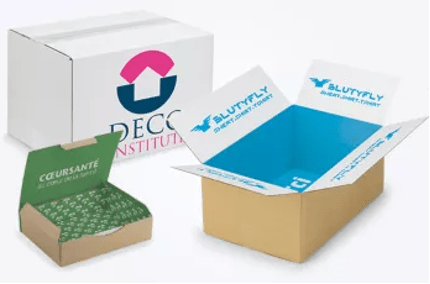
To find out more, read our advice on how to create personalised packaging, the ideal communication medium.
Consider made-to-measure packaging if necessary
When we talk about packaging design, we often think of creating made-to-measure packaging. With made-to-measure packaging, you can personalise the volume, materials and dimensions of your packaging, so that it provides the best possible protection for your goods.
But custom packaging is also useful for :
- Reducing over-packaging
- Get into the letterbox as soon as the carrier arrives
- Optimise your logistics costs by reducing the volumetric weight of your containers
This is where a good packaging design brief is crucial, as your packaging specialist will create the final product ex nihilo, based on the characteristics of the goods and your specific objectives.
However, be careful not to push creativity too far in terms of packaging shape: it could harm the simplicity of transporting your parcels, and therefore your customer experience in the end.
To find out more, read our article “Tailor-made packaging or personalised packaging: what do you need?
Don’t neglect the cushioning of your packaging
The cushioning you include in your packaging is essential for your e-commerce deliveries, as it prevents the products from moving inside the container, and therefore reduces the risk of breakage.
When you start designing your packaging, remember to personalise the cushioning material you have chosen, and in particular :
- Kraft paperKraft paper, which can be printed with your logo or slogan
- Tissue paperwhich you can easily choose the colour of
- Foam paddingwhich can be coloured to match your corporate identity
When choosing your cushioning, don’t forget to take into account the specific protection needs of your products. For example, they may need to be protected against static electricity (for electronic products), humidity, scratches or temperature variations. Each cushioning method has its own advantages.
To find out more, read our article “Which cushioning materials for your parcels?
Make sure your packaging is ecologically responsible
Ecology, and in particular the impact of packaging on the environment, is a key concern for today’s consumers. So it’s out of the question to think about the design of your packaging without considering its eco-responsibility.
Today, there are dozens of eco-friendly packaging solutions. Single-material packaging, recyclable packaging, reusable packaging, biosourced packaging… There’s no shortage of solutions.
To choose the one that suits both your brand image and the experience you want to offer your customers, use the 5Rs of packaging. This involves following one or more of the following five pillars:
- Reduce the weight or volume of your packaging, to limit the use of raw materials and over-packaging.
- Reuse your packaging as much as possible, for example by choosing returnable packaging (which withstands the initial shipment of products, then their reshipment when the customer returns).
- Replace packaging with a high ecological impact with eco-responsible alternatives, for example by replacing petro-sourced plastic packaging with cardboard or biosourced plastic packaging.
- Renewing the raw materials used wherever possible, by choosing materials from sustainable or renewable sources (such as food packaging made from sugar cane or bamboo, for example).
- Recycle packaging wherever possible, to include it at the heart of a sustainable circular economy.
This is a crucial issue if you want to end up with a truly high-performance packaging design! So don’t hesitate to delve into the 5Rs of packaging in this practical article.
Using technology to boost the customer experience
How about sprinkling your packaging design with a bit of new technology, to make your customer experience even more memorable? That’s what connected packagingwhich includes an NFC chip or a QR Code. These technologies allow you to enhance your consumer’s experience by making it continue online.
For example, you can :
- Promote a page on your website that complements the customer’s purchase
- Ask your customer for feedback or an opinion
- Provide information on the end-of-life of the packaging
Are you interested in these creative and technological levers? Think about including them as inspirational elements in your brief.
Think about the third-party elements of your tertiary packaging
Strapping bands, adhesive tape, integrated closures, labels… All these third-party elements need to be integrated into the packaging design to give a coherent overall appearance to the final packaging.
Think in particular about their eco-responsible nature. For example, you can personalise an adhesive tape with kraft paper, or use recyclable gummed tape to make your packaging 100% ecological.
You’ve got all you need to start designing your next packaging! Need more inspiration? Check out these 5 examples of brands that have mastered packaging design, and use them to make yours even more effective!












